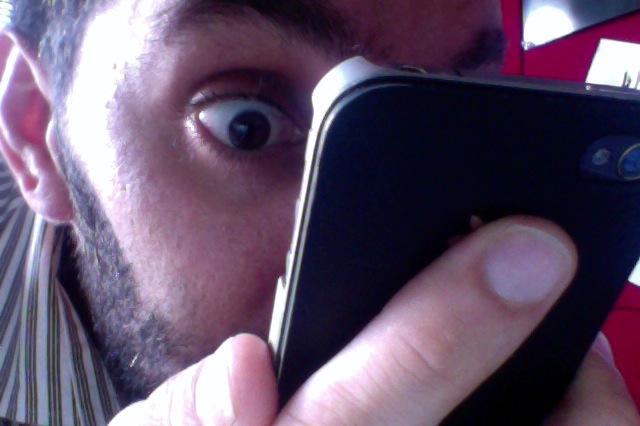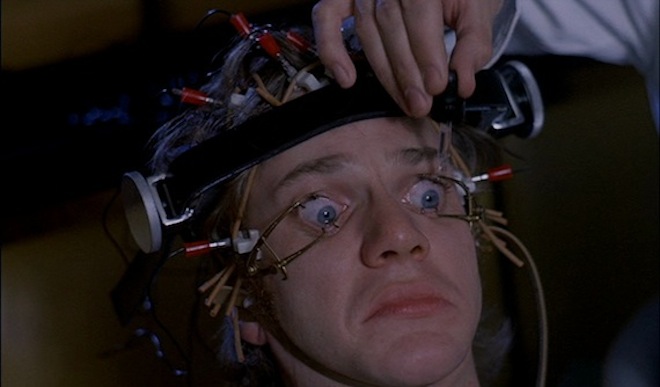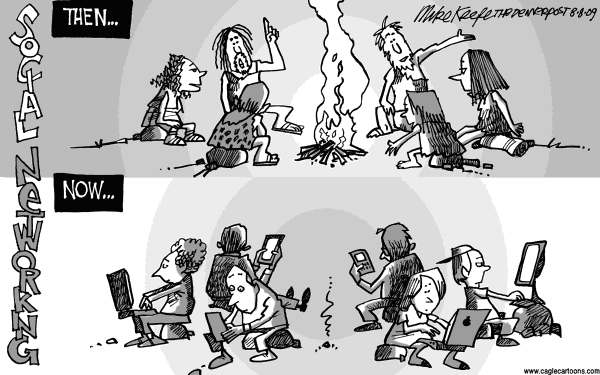I recently received a question in a comment from Jesse Scott (@twowaystairs) about a topic I have been meaning to write about for some time. He is wondering how I Tweet while in the classroom.
I find it amazing that you, Jabiz, can tweet and teach at the same time because, while I love the Twittersphere and understand and appreciate what it has to offer, I find a huge disconnect when I try to tweet in the middle of things happening. I feel like I disengage from the moment, for a moment, while I post a tweet and things lose momentum. More so when I’m part of the conversation but even when I’m not, I feel like I’m missing part of the conversation and not giving people their due respect. How, in your opinion, do you keep that balance?
Great question! Before I get to it, however, let’s consider the larger context in which the question is set. Really he is asking about being distracted by alternative conversations during real time events, in this case with the use of Twittr, at a PYP exhibition or some other conference. The short answer, I think, is that we are all engaged and distracted by different thing and at different levels. If something is truly engaging then no amount of white noise can disengage us from it. Even if we are Tweeting it, we do so in the hopes that it is enhancing the event and adding a layer of complexity. But sometimes it is just best to shut it down and allow ourselves to be truly absorbed.
For me, like most people I assume, it is difficult to turn off my brain. My constant Twitter stream of thoughts is always on. So even when I am experiencing a talk or presentation, my brain is firing on all cylinders. I find it useful to house these thoughts in my Twitter stream. Partly because I just want them stored somewhere, remember Twitter was originally called a micro-blogging site. I still see it as short form blogging or public note-taking. For better or worse, Twitter has become my online public stream of consciousness. Since I cannot turn that off in the midst of reality, I choose not to turn it off on Twitter. I Tweet what I think, when I think.
This is nothing new, before Twitter I always had a small journal into which I would scribble these random thoughts. The beauty of life now, is that my little black journal talks back! This talking back, however, is what I think Jesse sees as distracting. And he is right, it can be. When the back channel becomes more interesting that the main event, what is one to do? Here is the scene, you are at a keynote speech and the conversation about what is being said is more engaging than what is being said! What do you do? Not sure I have an answer for that. Hate to sound like a broken record, but these are personal negotiations about balance and priorities. I believe in giving people respect when they present and affording them as much of my attention as I can. As I do more and more speaking and presenting, I expect that much from an audience. That is a personal thing for me. Even at meetings, I try to have my laptop down, when I know the person speaking wants my attention. I see so many teachers, the same ones who always complain about distracted kids, checking Facebook at a staff meeting when they should be doing something else!
So in the case of the PYP exhibition, the question is does Tweeting add to the experience? Or is it a gimmick to appear to be using technology? Not sure I can answer that, but if technology feels wrong then it usually is. Put down the tweets and give those kids the wonder and engagement they deserve.
Sorry abut that tangent…back to how I Tweet in class. I have touched on a lot of the points already, so I will refer back to them in the next few paragraphs. I know many people are a bit aghast and put off when they here that I usually Tweet my way through all my classes. “How can you be teaching and Tweeting at the same time.” or “The kids deserve your full attention.” or “If you have time to Tweet then some kid is not getting enough attention!” Fair enough.
To start I guess we need to define some basic terms: teaching, classroom, attention. I don’t feel that my students are getting a traditional classroom experience with teacher talking at them and delivering content. There are seldom times when I need undivided attention. More and more often, I am realizing that whole group delivery of instruction is a waste of time. So much of my actual teaching comes through 1-1 chats or small group interactions. It is when the kids are busy with actual work or creation or production that I sit with them and re-teach whatever it was I taught at the beginning of class. So I usually deliver major concepts or skills or ideas at the start of class. Laptops down. Old school. Listen to me. I am the sage on the stage baby! I know some things about (X) and I want to share these ideas with you. I know how to do (Y) and you need to listen. Of course there is discussion and hopefully an open line of communication. I never Tweet during these times. These lectures usually happen at the beginning of a unit and I try to keep them short.
Once kids have listened, it is time to get on task. This is when laptops flip open, mine included. I have very few, if any rules, about who can use what and where they should be online during class. I allow cell phones, sometimes kids need to text. Sure go ahead. You need to check your Skype, fine, as long as you stay on task and do what you should be doing. I seldom have any issues with kids being distracted, because when the time comes to have their laptops open most kids know the task and are into it before I say a word. A five minute text is no big deal. If someone were to spend the whole time texting during my class, then we would chat. This has never happened.

cc licensed ( BY NC ) flickr photo shared by mgjefferies
Kids usually work alone or in groups and I hover. I stop and sit and talk. I redeliver content. I make sure the skills are there. I chat about things that are relevant. I stop everyone, “Laptops down please.” I make a point to the whole group. Back to work. I go to each group, each student and check for understanding. There is usually music playing. Instrumental Beastie Boys is a nice touch. We had Korean Pop yesterday. The mood is light.
During these times, Twitter is just another student. It sits there. As I hover, I share my thoughts or Tweet what kids are saying or doing. Remember I cannot turn of my thought; I have some of my best ideas when I am with kids. Sometimes people respond, if it is not taking too much energy I respond. If it will take me too far from my kids then I say, “I am in class catch you later.”
We would never tell a teacher not to have Google open during class, because it is too distracting. I see Twitter in the same way. I like that my kids see I am on Twitter. It is not a secret. I want them to know that we have the power of a huge network at our backs. If they have questions I don’t know I say, “Let’s ask Twitter.” The other day, kids were editing their films and they needed footage of an old school bell. I suggested we ask Twitter. An hour later Adrienne sent us a 45 second clip of a bell at her school. I want kids to see that things like this are possible. I want them to understand the power of Twitter.
After a few seconds hovering over Twitter, I go back to a group that is working. It is a system that works for me. Now I am lucky to work at a school that is 1-1 with small class sizes and great kids. They work hard and are usually on task. I like to think I design units and assessment they find fun and engaging. If I find that things are not working, I improvise and we shake things up. I do not sit at my desk Tweet away, while kids fill out worksheets!
Are there times when I do get too absorbed with something that is happening on Twitter? Sure. I would be lying if I said no, but that is where that balance and personal negotiation comes in. I move away. I stop. I learn to control myself. Isn’t the biggest lesson we could model for kids. How to know when to be present and when to connect someplace else?
This post is already too long, so I will not talk about why I do not really use twitter with kids. That will be coming soon…









